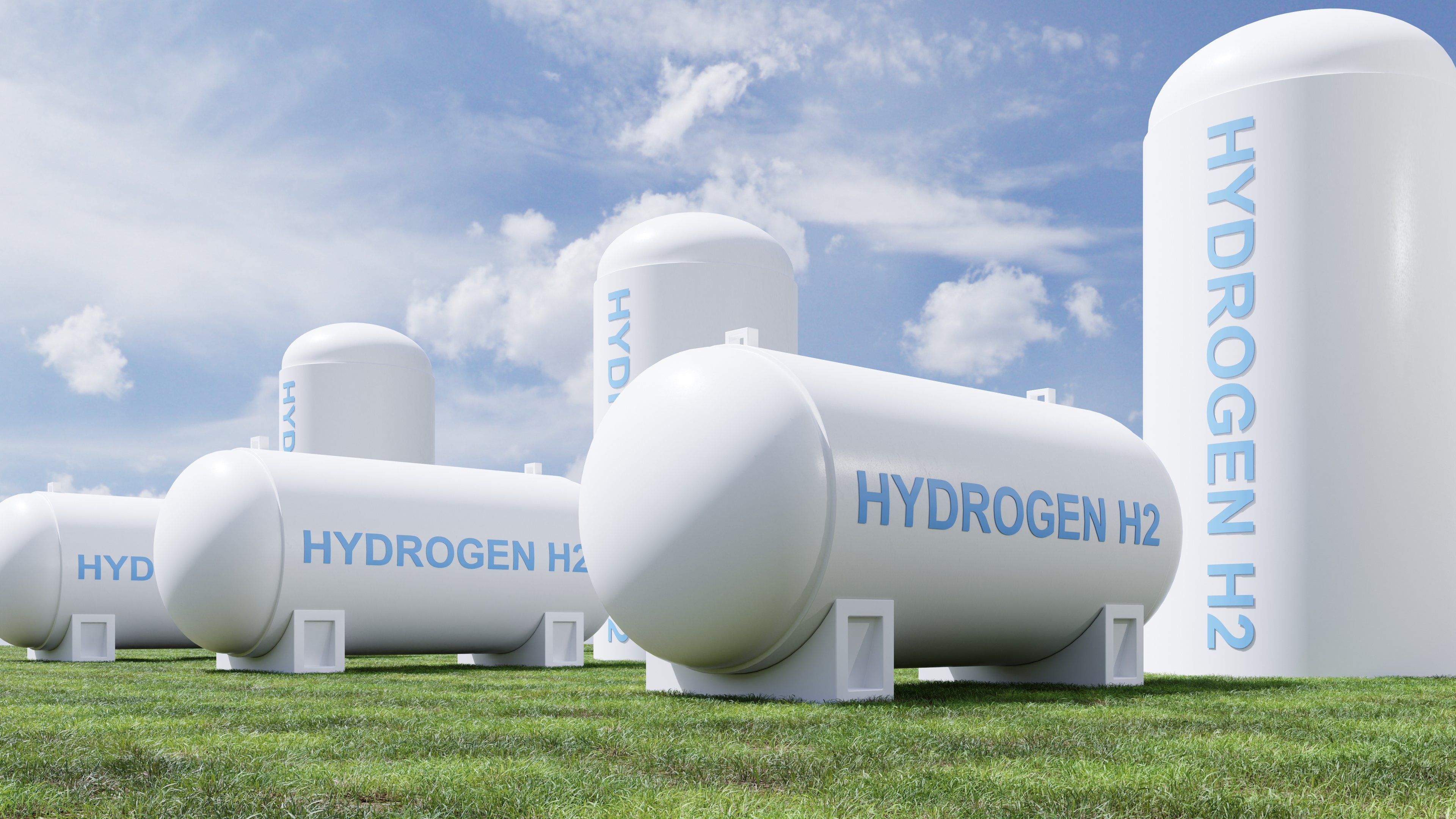The 2020 coronavirus crisis has hit the oil and gas industry incredibly hard. Global oil demand is down 30%, a massive blow to a segment that's unable to respond with matching production cuts in anything like a quick-enough manner. As a result, the world is awash in excess oil that's going to keep the energy market out of whack for potentially a year or more. Tens of billions of dollars and hundreds of thousands of jobs will be lost, many permanently.
The follow-on impacts of what could be the deepest global recession in history are affecting the entire energy industry. Electricity demand has fallen due to the halting of so much commercial and industrial activity. Cash flows across the entire sector will be affected, potentially altering the landscape in permanent ways.
We asked four Motley Fool energy experts to share their thoughts on how the 2020 oil crash and coronavirus crisis could change the energy landscape going forward. If you're looking to invest in the energy industry right now, keep reading to get a better picture of the landscape, and implications you may not have realized.

Image source: Getty Images.
Lending in the oil patch could be permanently changed
Jason Hall: The cracks in many oil company balance sheets are starting to widen. Whiting Petroleum (WLL +0.00%) filed for bankruptcy in early April. Chesapeake Energy (CHK +0.00%) has hired restructuring advisors as one of its largest investors. The implications aren't just for oil producers, or onshore operations. Offshore driller Diamond Offshore (DO +0.00%) said it will skip its next interest payment, an action that will cause the rest of its debt to default.
Simply put, banks are not rushing to the oil patch with their checkbooks to bail out the industry this time. There is word that some of the biggest banks have already started the process of setting up separate operating companies to take over oil production assets from borrowers that default, instead of trying to sell the assets for pennies on the dollar. The worry is, asset values are so depressed in the current environment, banks can't afford to take the losses they would incur in what will surely prove an extreme buyer's market for troubled oil assets.

Image source: Getty Images.
And this could permanently alter lending in the energy industry. So many oil producers can't survive even a few months in the current environment, my expectation is lenders will require companies to retain far more cash, and what is considered an acceptable amount of leverage will also become far more conservative.
Yes, this is an unlikely, unprecedented environment. But in many ways the U.S. oil sector has been on the brink of disaster for a half-decade as oil companies steadily leveraged up. Banks surely realize that now, and will adjust their lending practices going forward.
Fuel cells could take a hit
John Bromels: When you're thinking about the impacts of the oil price crash, you're probably not thinking about hydrogen fuel cells. But there are actually some indications that today's low oil prices could put a big dent in fuel cells tomorrow, affecting stocks like Plug Power (PLUG +0.84%) and Bloom Energy (BE 0.79%). Here's how.
Hydrogen itself is a very clean, energy-efficient fuel. But that hydrogen has to come from somewhere, and in the U.S., it mostly comes from natural gas. Fuel cell companies like to tout that it can come from cleaner sources like biomass, but those sources make fuel cells more expensive than relying on hydrogen from cheap, abundant natural gas, drilled right out of a shale basin near you. At least...for now.
The oil price crash has destroyed the economics of U.S. shale drilling, with many producers simply opting to shut down their shale operations. Since most shale producers extract both oil and gas, the big domestic natural gas oversupply that's kept prices so cheap may be coming to an end.

Image source: Getty Images.
The natural gas futures market seems to agree: January 2021 contracts are trading for around $3.09, a 20% increase since the end of March, and a 61% premium to the $1.92 trading price of current (May 2020) contracts. With natural gas representing about half the cost of an investment in fuel cells, a spike in natural gas prices suddenly makes those investments less economical. Fuel cell vehicle sales in particular may suffer, especially with gasoline at rock-bottom prices. And, of course, the costs of renewable power sources like wind and sunshine don't fluctuate.
Fuel cells were already a hard sell, even when the economics were favorable. Take cost savings out of the equation and they might collapse entirely.
Farewell MLPs
Matt DiLallo: Master limited partnerships (MLPs) used to be the backbone of the energy industry. These entities operated much of the sector's midstream infrastructure like pipelines, processing plants, and storage terminals. They used the cash generated from those assets to pay lucrative distributions to investors, which made them highly sought-after investment vehicles.
Investors, however, started souring on MLPs following the oil market's crash in 2014. Because of that, these entities haven't been able to raise the cash they need to expand. That's forced many to slash their lucrative payouts, causing even more investors to flee these entities. As a result, several MLPs have converted into traditional corporations in recent years.

Image source: Getty Images.
That trend will undoubtedly accelerate due to 2020's oil market crash. Investors have all but abandoned MLPs this year, with the average one in the Alerian MLP ETF shedding about 50% of its value. Even top-tier MLPs like Enterprise Products Partners (EPD 1.34%) and Magellan Midstream Partners (MMP +0.00%) have fallen victim to this carnage. That duo, which boasts the best balance sheets in the midstream sector, has shed about 40% of their value this year, pushing their yields above 10%.
In addition to a conversion wave in the coming months, there will need to be a lot more consolidation in the sector. Smaller MLPs focused on gathering and processing oil and gas don't have the scale needed to survive the industry's volatility. Because of that, they'll have to join forces so that they can diversify their customer base and geographical focus.
The energy transition will accelerate
Travis Hoium: For more than a decade, we've seen a slow transition from the century-old fossil fuel energy infrastructure to new forms of energy like wind and solar electricity and electric vehicles. I think this oil crash will accelerate that transition, and I want to make this argument from two angles: electricity generation and transportation.
On the electricity generation front, John makes a compelling argument that natural gas prices will rise because of a reduction in shale drilling, and I think that's right. But if that's true, it'll make natural gas power plants even less competitive with wind, solar, and energy storage. At the same time as natural gas prices are going up, the short-term demand for wind and solar plants is going down because utilities need less electricity and developers are running into their own financial problems.

Image source: Getty Images.
That may sound like a bad thing for renewable energy, but what typically happens when these industries have been oversupplied is that manufacturers and installers find new ways to lower costs to stay in business. And somehow, the price of wind and solar projects rarely goes up, meaning it's been a deflationary source of new electricity. So, I think on the electricity side of the energy industry we'll see the prices bid by wind, solar, and energy storage go down while the price for natural gas projects will go up, accelerating the transition to a cleaner grid.
Transportation will change in ways that we can't yet fully anticipate, but I think one trend will be an acceleration to ride sharing, e-bikes, electric scooters, and even staying home in metro areas. Lower wage workers are going to be looking for ways to shave expenses, and what bigger expense will there be to cut than an automobile?
We'll also see more people working from home, reducing the need for commuter vehicles when ride sharing can fill the occasional need for transportation around town. Combine these trends with the fact that companies like Cruise and Alphabet's Waymo are developing autonomous and electric ride-sharing platforms that will be on the street before we know it. At the end of the day, millions of people may never drive as much as they did just a few months ago, and that would be a huge transition for energy.








